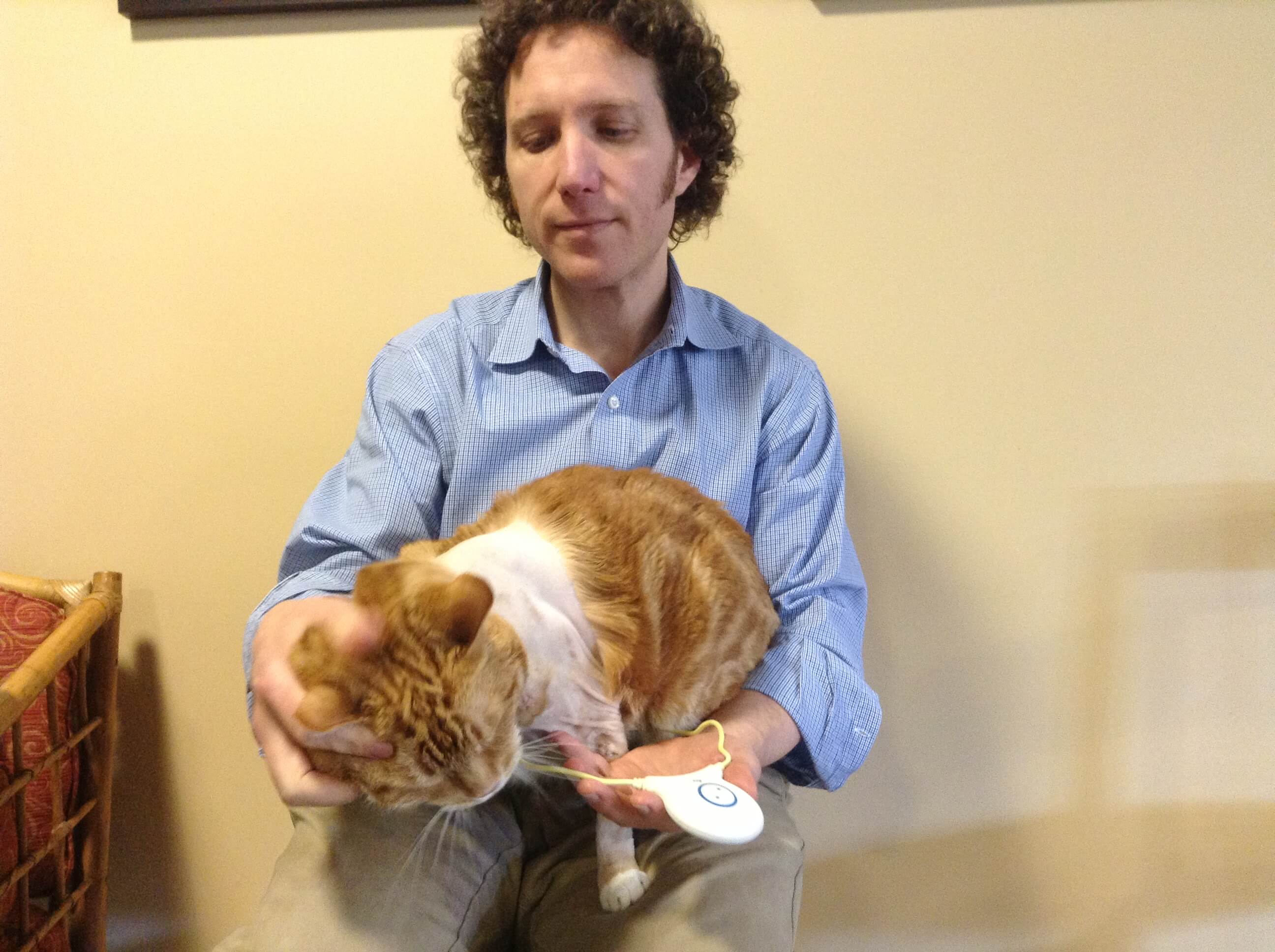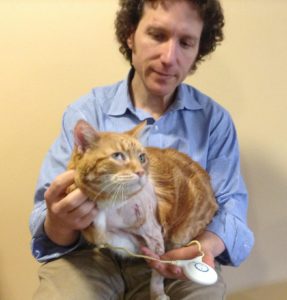Dr. Gary Richter, MS, DVM

Dr. Gary Richter, MS, DVM, is a holistic veterinarian practicing in Oakland, California and has recently won his second Best Veterinarian in the East Bay award from Oakland Magazine. Dr. Richter combines a rigorous background in Western medicine with holistic and Chinese medicine to give his patients the best care possible. His clinic, Holistic Veterinary Care and Rehabilitation Center, has used the Assisi Loop for several years. Dr. Richter sat down with our writer Naomi to discuss his holistic practice and how "the loop" helps his patients recover better, faster.
N: Dr. Richter, it’s wonderful to meet you and get to see your clinic. In addition to your formal veterinary training, what modalities are you certified in?
R: I’m trained in acupuncture, chiropractic, and hyperbaric oxygen therapy. I currently also do a lot with herbs, both Western and Chinese. However, I’m not trained in rehab. I have other people at my clinic to do that—there’s just not enough hours in the day!
N: When did you decide to become a holistic veterinarian?
It’s interesting; I was and still am a very Western-minded individual. That said, when I was a senior in vet school I saw an acupuncturist bring horseback from the dead, so to speak. It was an animal that the entire vet school staff had written off, and I saw an animal acupuncturist use acupuncture and herbs to within two days have this horse going home. That definitely grabbed my attention. But it wasn’t until years down the road, after having practiced Western medicine for about nine years, that I had the time in my life to get back to holistic studies. But I think it had always been in the back of my head as something that I really wanted to look at.
How did you first hear about the loop?
I first heard about it from Joe Thompson. I’ve known Joe for years and what I like about him is that he only deals with things that he really believes in. So when Joe came to me with the Assisi Loop , that in itself was enough for me to pay attention. We got a couple and tried them out, were really happy with the results, and the rest is history!
, that in itself was enough for me to pay attention. We got a couple and tried them out, were really happy with the results, and the rest is history!
Do you remember those first cases?
I think the first ones were both with dogs who had arthritis and joint pain. I also used one or two of the first Loops on some that had neck and back issues—disc issues—and they did really well. This was about two years ago now.
Do you have any current patients who are being treated with the loop?
Recently we had a Chihuahua come in that had blown a disc. The little dog had gone to see a neurologist who was pretty adamant that the dog had to go to surgery. The dog wasn’t completely paralyzed, but was very, very weak, having some issues with urinary and fecal incontinence, having a real hard time getting around, and was pretty painful. The owner had decided that for a number of reasons he didn’t want the dog to go to surgery, so instead we treated that dog with a combination of chiropractic, herbal therapy and the Assisi Loop.
Over a period of two or three weeks, that dog got significantly better and less painful, to the point of where I’d say non-painful, and urinating and defecating normally. His gait is not perfect—he’s still a little ataxic in the back end—but much better. The owner was ecstatic because the surgery didn’t have to happen and basically she got her dog back.
Have you found a specific injury or malady that responds particularly well to the Assisi Loop?
 I tend to use [the Loops] most on dogs with spinal issues, particularly disc problems. I find it to be really, really helpful with that.
I tend to use [the Loops] most on dogs with spinal issues, particularly disc problems. I find it to be really, really helpful with that.
Another advantage is more a client issue than a patient issue: when we have an animal that needs to be treated frequently and it’s going to be difficult for them to come back a couple of times a week—which it is for a lot of people. These may be owners with a work-schedule issue or who don’t live nearby. The Loop is a really good alternative in that it allows the dog to get treated twice a day instead of maybe once a week if that.
Plus, people like something that they can do at home; they like to feel that they are doing something, especially with the rehab cases. And we like to give owners homework, exercises to do with the dog and get them involved. The results are often better when there’s hands-on involvement.
From a pain control standpoint the Loop is great because we can do acupuncture here, but what about the six or eight days until we see them again, or two weeks? Now there is a way for care to continue. It’s a good marriage of traditional medicine and technology.
